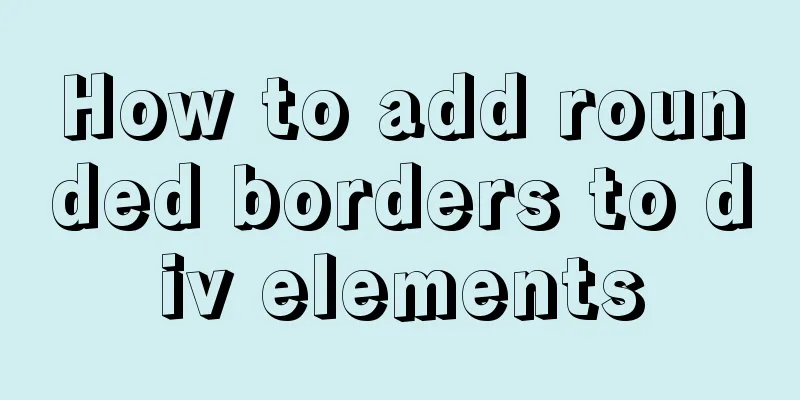Analysis and solution of a.getAttribute(href,2) problem in IE6/7

|
Brief description <br />In IE6 and 7, in a general a tag (an a tag written in HTML and inserted into the page through DOM operations), if the value of href is a relative path, the original value of href will not be obtained directly through a.getAttribute("href"), but the original value can be obtained through a.getAttribute("href",2); however, if this a tag is inserted through innerHTML, the original href value cannot be obtained even through a.getAttribute("href",2). It is estimated that when innerHTML='<a href="/haha">test</a>', IE6 and 7 will make compatibility processing for it and add some things. At this time, when viewed through outerHTML, the href of a is already the complete address -_-! It is said that a similar situation will occur in the src of img. Copy code The code is as follows:<!doctype html> <html lang="en"> <head> <meta charset="UTF-8"> <title>test</title> </head> <body> <a id="a" href="" onclick=".getAttribute(\"href\",2)">test</a> </body> </html> When you click on it in IE6 or 7, a big “/haha” will pop up! ! ! I started to suspect that something else was at work. At this time, I thought about how my a tag came from (string-based js template, innerHTML)... So, I simulated it through the following code: Copy code The code is as follows:<!doctype html> <html lang="en"> <head> <meta charset="UTF-8"> <title>test</title> </head> <body> <div id="test"></div> <script> document.getElementById("test").innerHTML = '<a id="a" href="/haha" onclick="alert(this.getAttribute(\'href\',2));return false;">test</a>'; </script> </body> </html> Tested again...sister's...the problem reappeared! In actual testing, after generating a, setAttribute("href","/haha",2) on a again, and then getAttribute("href",2) can get back "/haha". But if you want to do this kind of thing in a template, it seems too disgusting, so give up decisively! It is better to listen to Frank's advice... Simply add an attribute to identify the two link elements, and don't get stuck in a rut. Drill again-_-!: Copy code The code is as follows:<!doctype html> <html lang="en"> <head> <meta charset="UTF-8"> <title>test</title> </head> <body> <div id="test"></div> <script> var test = document.getElementById("test"); var a = document.createElement("a"); var txt = document.createTextNode("test"); a.href="/haha"; a.onclick=function() { alert(this.getAttribute('href',2));//"/haha" return false; }; a.appendChild(txt); test.appendChild(a); </script> </body> </html> Finally, I suspect that when inserting nodes through innerHTML, IE6 and 7 will do some "error tolerance" processing that it thinks is correct... and then I was wrong... |
<<: Introduction to new features of ECMAscript
>>: A brief analysis of the differences between undo, redo and binlog in MySQL
Recommend
MySQL Error 1290 (HY000) Solution
I struggled with a problem for a long time and re...
mysql delete multi-table connection deletion function
Deleting a single table: DELETE FROM tableName WH...
A simple and effective solution to forget the initial password when installing MySQL
When you install MySQL, you will be given an init...
Detailed explanation of three commonly used web effects in JavaScript
Table of contents 1 element offset series 1.1 Off...
How to use IDEA to create a web project and publish it to tomcat
Table of contents Web Development 1. Overview of ...
Solution to multiple 302 responses in nginx proxy (nginx Follow 302)
Proxying multiple 302s with proxy_intercept_error...
How to install MySQL 8.0 database on M1 chip (picture and text)
1. Download First of all, I would like to recomme...
centos7.2 offline installation mysql5.7.18.tar.gz
Because of network isolation, MySQL cannot be ins...
URL representation in HTML web pages
In HTML, common URLs are represented in a variety ...
Use of Linux relative and absolute paths
01. Overview Absolute paths and relative paths ar...
Navicat for MySQL 15 Registration and Activation Detailed Tutorial
1. Download Navicat for MySQL 15 https://www.navi...
Tutorial on installing rabbitmq using yum on centos8
Enter the /etc/yum.repos.d/ folder Create rabbitm...
Linux system command notes
This article describes the linux system commands....
Advanced Usage Examples of mv Command in Linux
Preface The mv command is the abbreviation of mov...
Comprehensive analysis of MySql master-slave replication mechanism
Table of contents Master-slave replication mechan...









